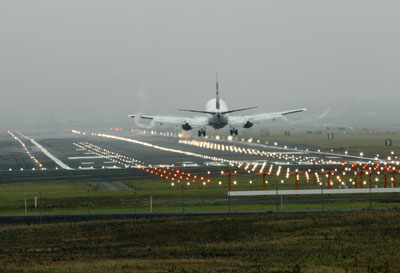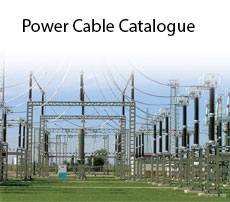صفحه Airport Lighting cable
Primary Cable
The primary cable is an essential component of the series circuit. It is eitner drawn into conduits or airectly laid in trenches. As voltages in excess of 5kV can develop at the output of the constant current regulator (e.g. In case of accidental open circuit), the cable shall be insulated to operate continuously at 3 or 5kV to ground. The conductor cross section shall be at least 6 sqmm to limit power losses. Larger cross sections may be necessary when the series current is higher than 6.6 A.
One metal screen or shield, applied over the cable insulation ana eaYthed wall equalize the voltage gradient over the whole cable length and thus increase its life. Such screen is recommended when the cable run crosses various earth layers or conduits presenting differences in electric conductivity.
 |
 |
Advantages resulting from the use of screened (shielded) cables
A. Electrical
The addition over the insulation of a metallic, non-magnetic shield, generally a helically-wound copper or brass tape, when properly grounded (earthed) equalizes the voltage gradient over the whole length of the cable run and the voltage pressure within the insulation.
In practice, this eliminates completely surface tracking over the insulation, a phenomenon commonly found on non-shielded cables operating at circuit voltages of 2 kV or
over. The effects of surface tracking are premature cable ageing and destruction of the insulation under the combined effects of ozone and temperature generated by ionization.
The environment into which the cable operates is of prime influence in the development of the “surface tracking” phenomenon. Therefore, shielding practice is recommended for circuits voltages in excess of 2 kV, when one or more of the following installation conditions are met:
* in dry soil, such as in the desert
* when the cable transits from conductive to non-conductive soil or conduits
* when the cable transits from dry to wet soil or from dry to moist conduits
* in moist conduits
* when lubricants have to be used to pull cables into conduits.
B. Radio interference
Another advantage of the shield is a reduction of the RF signals emitted by the cable.
Thyristor-controlled CCR’s generate RF, particularly when they operate at reduced load and/or low brilliancy.
C. Mechanical
The mechanical resistance of the cable against attacks from termites. perforating insects and small rodents is dramatically improved by the addition of a continuous metal shielding such as a brass tape.
Even if the cable outer jacket is damaged, the cable remains perfect from the electrical standpoint,as the voltage pressure happens within the well protected insulation. The earthed screen avoids any shock hazard from damaged cable as the screen is diverting any leakage current to ground.
Conclusions :
* Shielded cables should be specified for all major lighting systems
* Good earthing (grounding) of the shield at regular intervals is essential.







